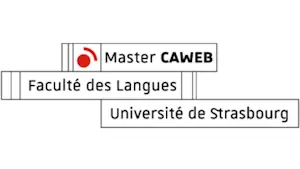The Bitcoin Revolution in 3 Key Questions
We all know someone whose only obsession in life is a phenomenon called bitcoin. If that’s not you, keep reading. You might just become that person.
First of all, what are Bitcoins?
Essentially, bitcoin is a digital cryptocurrency. As with your typical dollar and euro, you can use it to buy goods and services. On the 2nd of November 2017, this unprecedented innovation hit an all-time high, when the value of one bitcoin reached US$7,000!

For more information about this topic, watch the following interview from CBC News with Robert Sluymer, managing director of technical strategy at Fundstrat Global Advisors.
The revolutionary aspect of this currency is not limited to its digitalization. It also lies in its decentralization. Federal banks have absolutely no control over bitcoins. In other words, your accounts cannot be frozen nor inspected. This also means that you do not have a traditional bank account, but rather a database saved online or offline, which is often called a wallet.
Defenders of bitcoin often believe that refusing to operate with “the big banks” is the ultimate form of financial democratization. With the ever-growing negative reputation of banks, people are drawn to a more transparent system, and bitcoins provide them with just that. As a matter of fact, the background story of every bitcoin is in the public domain, though the names of the buyers and sellers remain secret.
An undeniable benefit of transparency is safety, since the illegal use of bitcoins can usually be tracked.
More specifically, a bitcoin is a chain of blocks. Every transaction adds a new block that is then divided into 3 parts:
- Firstly, there’s the 34-character identifying address that is used to transfer bitcoins. For every transaction, there is a unique address.
- Secondly, there’s the history of the bitcoin, which gathers information about who the buyers and sellers are.
- Lastly, there’s the key header log. This is the intricate signature of a user, meant to confirm and secure anonymous transfers.
Do Bitcoins Grow on Trees?
Traditional currencies and bitcoins are still very much compatible. In fact, you can convert your money into cryptocurrency by visiting trading websites such as LocalBitCoins, CoinCola and itBits, to only name a few.
You can also collect bitcoins. Think of it this way, bitcoins are like gold; there is only a limited quantity, yet their value remains stable. In the case of our cryptocurrency, the total is capped at 21 million bitcoins.
In order to acquire bitcoins, you have to become a miner, which is easier said than done. Miners approve transactions by solving complex mathematical equations. To achieve that goal, you will need the right skills, a powerful computer, as well as the financial resources to pay for the electricity bills.
So Should I Give it a Try?
There is no definite answer to that one, but of course, as with any investment, due diligence is obviously crucial. Do your research, check the good and the bad, talk to people who have tried it, and if the interest remains, then the bandwagon will certainly still be there for you to jump on, even though the value of bitcoins might change, hopefully for the better. What is certain though is no matter if you’re for it or against it, you cannot ignore the fact that bitcoin is a unique response to the big banks’ centralization that has been criticized time and again in recent years.
Sources :
https://www.coindesk.com/price/
https://www.forbes.com/sites/investopedia/2013/08/01/how-bitcoin-works/#20b9c1e617ff
https://www.lifewire.com/what-are-bitcoins-2483146
https://www.youtube.com/watch?v=yaKxBo5bpEw&list=WL
Article written by a CAWEB Master’s student.




